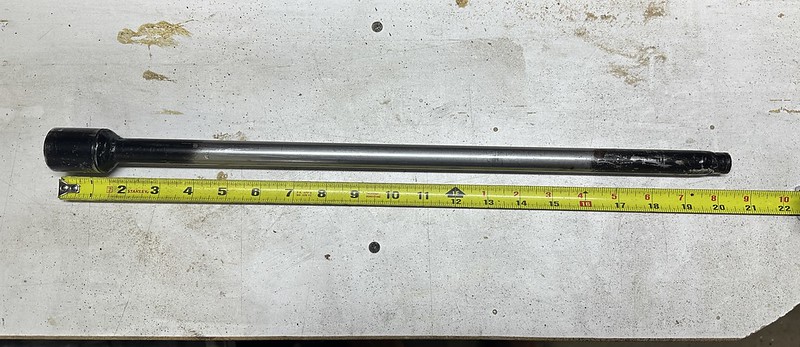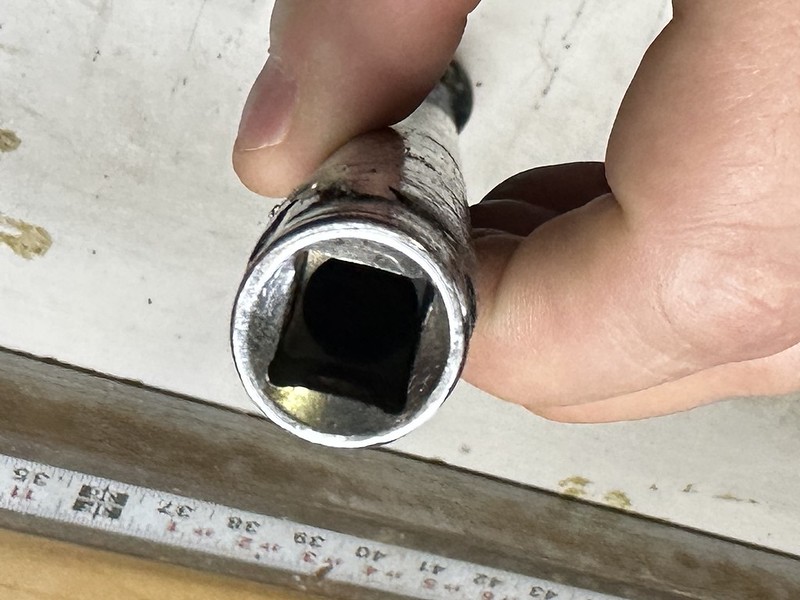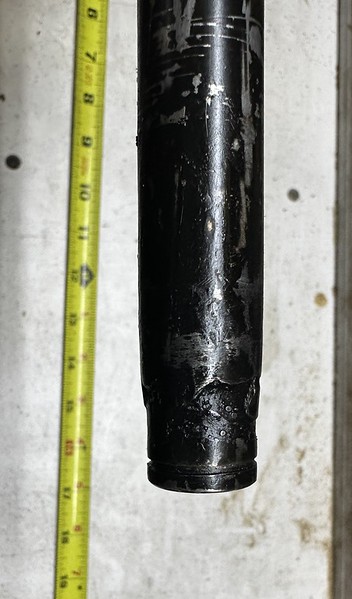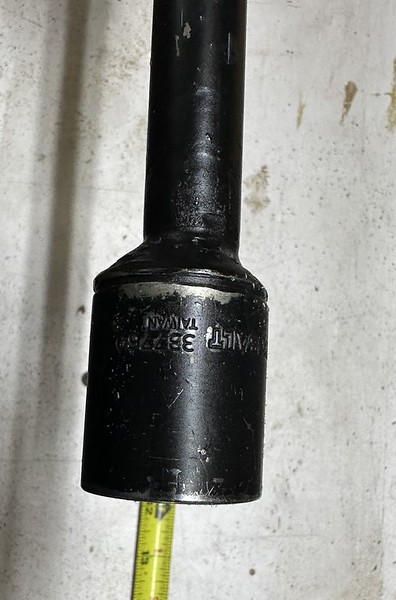Worked like a champ!From the 2016 FSM.
I've never tried this before, I think if you click on the attached screen shots from the FSM they might open large enough to read.
You are using an out of date browser. It may not display this or other websites correctly.
You should upgrade or use an alternative browser.
You should upgrade or use an alternative browser.
2014 FJR1300A Broken Fork Damper
- Thread starter Socalrider22959
- Start date

Help Support Yamaha FJR Motorcycle Forum:
This site may earn a commission from merchant affiliate
links, including eBay, Amazon, and others.
Where does one get a fork cartridge holder?
I will be servicing my forks for the first time myself soon. On a 2013.
I'm going to skip ahead to the part where you need to remove the retaining bolt on the bottom of the fork leg while holding the cartridge to keep it from spinning.
Review the disclaimer at the top of my previous message.
The cartridge has a 26mm hex on the top, but the damping rod passes through that hex to the fork cap so you can't just put a 26mm socket on an extension and reach down the fork tube to hold the cartridge.
The most common suggestion for a cartridge holder is a 26mm socket with a 1/2 inch tube welded to it that will reach down the fork tube with the damper rod extending inside the 1/2 inch tube. Hold the 1/2 inch tube at the top while removing the retaining bolt at the bottom of the fork. Pro tip from Garauld, use a 3/4 inch drive 26mm socket and use a 3/4 inch square tube; no welding required. Thanks, Garauld.
RaYzermans cheap, easy suggestion is to use a 1 inch square tube. Cut 1 inch long slots at the corners of one end.
Cut off two of the resulting tabs on opposite sides and bend the remaining two tabs apart some. Slip the square tube down the fork leg and jam it against the 26mm hex on top of the cartridge while removing / replacing the retaining bolt at the bottom of the fork. Thanks, Ray.
There will be someone along shortly suggesting that a cartridge holder is not necessary if you use an air impact wrench to remove the retaining bolt at the bottom of the fork leg. Many have used that method, and most have been lucky enough not to break the compression valve neck off.
BUT the 2013 - 2015 compression valves seem to have a weak neck. Several have been broken off in the last couple of years either in disassembly or reassembly. See the photo in post #1. The consequences are expensive. That compression valve is not available from Yamaha as a separate piece. The cartridge assembly is no longer available from Yamaha as a separate part. The entire fork leg assembly is no longer available from Yamaha for the 2013 - 2015 scooters. See some possible options listed above.
You say you'll be servicing the forks for the first time yourself.
Is that true?
If so there are several steps in removing / reinstalling the forks from the scooter, and many steps to disassembling / reassembling the forks.
There are helpful hints to avoid problems at several of those steps.
If you scroll down the page below this thread, there are links to several other threads on the subject and some of those threads will lead onto more threads. There are also fork service threads on the other forums. With a little reading most of the process has been discussed to death.
You may like this one:
https://www.fjr-tips.org/maint/ForkSeal-BushingReplacement.pdf
I'm a little too far away to come over and hold your hand.
BTW IMO it is a better idea to come to the forums and ask about something one has never done before tearing into it and then coming to the forum afterward asking how to fix it. That comment is not aimed at anyone in particular and is not intended to insult or offend anyone. Life is just easier if mistakes can be avoided.
dan
| Things are never so bad they can’t be made worse. – Humphrey Bogart (as Charlie Allnut) from The African Queen. |
Last edited:
SkooterG
Purveyor of Crooked Facts
Excellent info! Thanks Mr. Dan! I've got a much better visual in my head now. And I was definitely planning on reading up on the process in my service manual and on the forums before diving in. And from previous reading, I knew about the impact wrench method. What I did NOT know until reading this thread and your helpful information was the risk of breaking the cartridge on '13-'15 FJRs. Since I don't know a welder, Garauld or Ray's solutions sound excellent!
escapefjrtist
Searching for Dry Roads
From pic, can't tell if that's the correct tool. You need a 26mm socket to hold the standard fork cartridge. Tool in link looks like one for USD forks. I made one similar for the Ultimate FJR!!Here is the RaceTech cartridge removal/installation tool mentioned above. Not necessarily a cheap solution, but better than breaking a cartridge.
https://racetech.com/ItemInfo/178
You know what I think? I think escapefjrtist should ride his sorry *** down here to Arizona and bring his tool with him. Then hold my hand as he shows me how to service my forks!
Check your PMs.
If you can wait until March, a visit is entirely possible...
~G
Auburn
Well-known member
One thing to consider, is the torque value for the bottom bolt to the cartridge is too much. Max at Traxxion Dynamics recommends snugging it up and then give the bolt just a little more. It's got a copper washer underneath and won't leak and won't break the cartridge. The bolt can't fall out, the axle shaft will prevent it. He claims he has never had one leak following his method. You still need the 26 mm socket to prevent the cartridge from rotating while tightening, but you don't need to 25 FT-lbs the FSM calls for either. 10 FT-lbs will be plenty to prevent any leaks. This is similar to the over torque spec on the engine oil drain plug with many striping out the threads in the oil pan.
here is a picture of my fork tool: will take a friend with a welder about 5 minutes to weld up. The 1/2" tube is about 18" - got a 3' piece and cut it in half. Lowes stocks this tubing (so does Home Depot)

3/8" drive shorty extension welded into the end of the 1/2" tube


26 mm socket - got this one from Lowes. 6 or 12 point doesn't matter which one

here is a picture of my fork tool: will take a friend with a welder about 5 minutes to weld up. The 1/2" tube is about 18" - got a 3' piece and cut it in half. Lowes stocks this tubing (so does Home Depot)

3/8" drive shorty extension welded into the end of the 1/2" tube


26 mm socket - got this one from Lowes. 6 or 12 point doesn't matter which one

Similar threads
- Replies
- 10
- Views
- 2K
- Replies
- 36
- Views
- 3K
- Replies
- 8
- Views
- 604
- Replies
- 0
- Views
- 347
- Replies
- 16
- Views
- 1K


